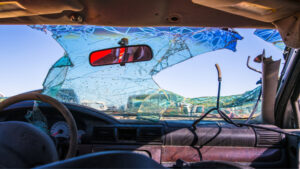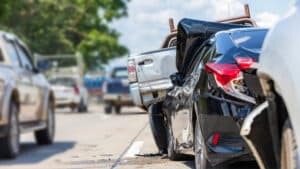Written By Christopher B. Dolan and Aimee E. Kirby
This week’s question comes from Ashely L. from San Jose: My uncle Ralph was driving his motorcycle in an unincorporated area of San Jose when he lost control and went down. It appears that the road was unkept. I am trying to help my uncle, who doesn’t even have email and is not good with using the internet, with his case. The police officer said that the road should have had a sign and a barrier, because lots of accidents happen at that location where my uncle lost control. I am not sure how we go about proving the road caused my uncle’s accident. Does whomever own the roadway have insurance, like cars do to pay claims?
Ashely, I am sorry to hear that your uncle was in the accident. The type of case you are describing is called a Dangerous Condition case. These are very complex legal cases, and they are not the kind of case that I advise that injured victims, or their families tackle alone. To prove a Dangerous Condition case, you must prove that the roadway was a dangerous condition, that the government entity who controlled or owned the road, knew or should have known about the dangerous condition, and that they had time and money to fix the condition, but did not. Your family would also have to prove that the dangerous condition in the roadway caused the accident. Dangerous condition cases can involve motorcyclist, runners on a highway, cars, trucks, or even bicycles. The Defendants in these cases are the cities or counties that own the road.
It is important to document the scene immediately with photos if the injuries are serious. The first thing our law firm does is go to the roadway in question or use the police report to pull the location up on Google Earth. Often the police reports for accidents, wherein a roadway condition may have contributed to the loss, do not document the scene well, or even mention a dangerous condition that may have contributed to the accident. We have personally litigated a motorcycle collision wherein a pothole caused the crash, yet no pothole was photographed or even mentioned in the police report. In this case, a witness was able to describe what the motorcyclist hit, and what happen to him, as our client had no memory of the crash.
After visiting the scene, the next thing your attorney should do is research the accident history through the TIMS database maintained by UC Berkley and issue a Public Records request of the county and city the subject roadway is in. The TIMS database allows you to enter in a county and city pull all accident history for the location by way of a map or a list. This can help us get an initial baseline on whether or not a dangerous condition can be proven. The number of accidents at a location, if it is higher than normal, goes to prove notice of the dangerous condition and that the location is dangerous. You want to look for similar accidents, so in your case you are looking for single vehicle accidents, as opposed to a sideswipe collision. This information is then verified with a public records request to Caltrans for the same data. The TIMS database is free, and so are public records requests typically. Remember, a court will only consider similar accidents in considering whether accident history is relevant to your case.
Another thing you and your attorney should do is get public records request from the entity that owns or controls the subject roadway. These public records requests are usually tailored to government entity claims regarding the location, complaints, roadway work and maintenance, along with evaluations done for repair of the subject roadway such as pavement index reports or permit and bidding documents. Lastly, if the case is near commercial buildings or in a residential area, often our firm will hire a private investigator to conduct additional research. Long term business owners or homeowners may have taken pictures of your alleged dangerous condition. Depending on the type of dangerous condition, these business owners or property owners may have also attended City Council meetings and demanded action or emailed the city. There have even been instances where neighbors complained to the city on social media applications like Nextdoor, which can be used.
Because these types of cases have strict guidelines regarding claim presentation and pleadings it is also advisable to seek counsel to investigate this for you. An attorney can gather this data and advise you of the likelihood of being successful in a dangerous condition case, very quickly. I hope your family continues to heal and you get answers as to what occurred that day for your uncle.










